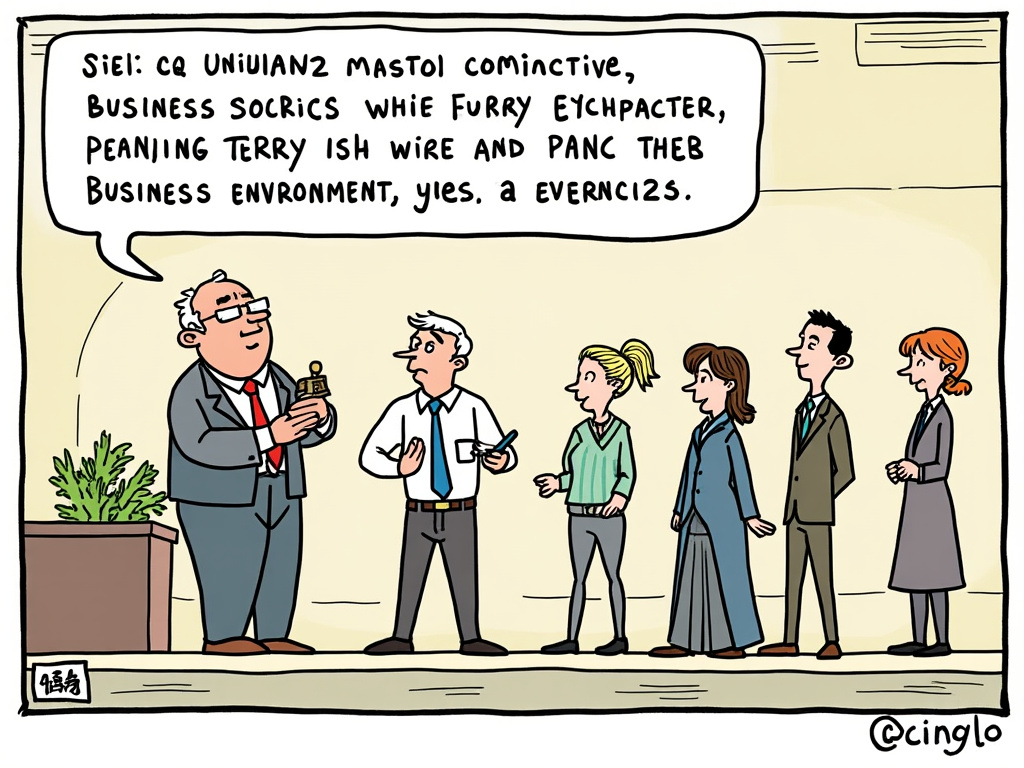
Unlocking Wealth Through Destination Real Estate: The Strategic Investor’s Guide to Resort Hotels and Aparthotels
Reading time: 12 minutes
Table of Contents
- Introduction: The Rising Tide of Leisure Investment
- Market Overview: Understanding the Resort Property Landscape
- Business Models and Operational Structures
- ROI Analysis: What Drives Returns in Vacation Real Estate?
- Location Intelligence: Beyond the Brochure
- Financial Planning and Capital Requirements
- Navigating the Regulatory Landscape
- Risk Mitigation Strategies
- Success Stories: Case Studies in Resort Investment
- Future-Proofing Your Investment: Emerging Trends
- Your Investment Pathway: From Analysis to Action
- Frequently Asked Questions
Introduction: The Rising Tide of Leisure Investment
Ever considered the untapped potential of vacation property investments? You’re not alone. While traditional real estate continues to attract steady capital, resort hotels and aparthotels have emerged as compelling alternatives for investors seeking diversification with attractive yield potential.
Here’s the straight talk: Resort property investment isn’t just about owning a slice of paradise—it’s about positioning capital at the intersection of real estate appreciation and hospitality revenue streams. This dual-income approach creates resilience against market fluctuations that single-purpose investments simply can’t match.
Consider this perspective from industry leader Mariott International’s CEO Anthony Capuano: “The convergence of hospitality and residential real estate isn’t just a trend—it’s a fundamental shift in how consumers experience destinations and how investors capture value from them.”
Throughout this guide, we’ll dissect the strategic frameworks, operational considerations, and market intelligence needed to navigate this specialized investment category with confidence. Ready to transform vacation properties from personal indulgences into performing assets? Let’s dive in.
Market Overview: Understanding the Resort Property Landscape
The resort investment market stands at a fascinating crossroads in 2023. Post-pandemic travel recovery has accelerated faster than predicted, with global leisure travel spending projected to reach $1.8 trillion by 2024—a 9.3% compound annual growth rate according to the World Travel & Tourism Council.
This resurgence is reshaping investment opportunities across both traditional resort hotels and the rapidly expanding aparthotel segment, which has grown by 14% annually since 2019.
The Evolution of Resort Properties
Resort hotels have transformed dramatically from their origins as simple vacation accommodations. Today’s successful properties integrate sophisticated amenity packages, technological enhancements, and experiential programming that command premium pricing.
Meanwhile, aparthotels—hybrid properties offering apartment-style accommodations with hotel services—have emerged as particularly resilient assets. Their flexible-stay model appeals to both short-term vacationers and medium-term travelers, effectively broadening the customer base and stabilizing occupancy patterns.
Demand Drivers and Market Segmentation
Understanding who patronizes these properties is essential for sound investment decisions. The primary segments include:
- Leisure travelers (68% of resort hotel guests) – Seeking experiential stays with memorable touchpoints
- Bleisure travelers (business/leisure hybrid, 22%) – Extending business trips with leisure components
- “Digital nomads” (growing rapidly, 16% of aparthotel guests) – Working remotely while experiencing destinations
- Luxury segment travelers (highest yield category) – Prioritizing exclusivity and personalized service
Quick Scenario: Imagine you’re evaluating a beachfront resort hotel versus an urban aparthotel. The resort might show higher seasonal peaks but deeper low-season troughs, while the aparthotel maintains steadier occupancy through diverse guest segments. This occupancy stability often translates directly to investment predictability—a critical factor when projecting returns.
Business Models and Operational Structures
Successfully investing in resort properties requires understanding the underlying business models and selecting the operational structure that aligns with your investment objectives and management capabilities.
Ownership Models Comparison
| Ownership Structure | Capital Requirement | Control Level | Risk Profile | Typical Returns |
|---|---|---|---|---|
| Full Ownership | Very High | Complete | High | 8-16% ROI |
| Fractional Ownership | Moderate | Partial (vote-based) | Moderate | 7-12% ROI |
| REIT Investment | Low | Minimal | Low | 5-9% ROI |
| Condo-Hotel Units | Moderate to High | Limited | Moderate | 6-10% ROI |
| Private Equity Partnership | High | Strategic | Moderate to High | 10-18% ROI |
Management Approaches
How your property is managed dramatically impacts returns. The three primary approaches are:
- Brand Management Contracts – Established hospitality brands (Marriott, Hilton, etc.) manage the property for a fee, typically 2-4% of gross revenue plus incentive fees of 8-12% of GOP (Gross Operating Profit).
- Third-Party Management Companies – Independent operators typically charging 3-5% of revenue with lower brand recognition but often higher operational efficiency.
- Self-Management – Owner-operated properties that eliminate management fees but require hospitality expertise and significant time investment.
Pro Tip: The right management structure isn’t just about minimizing fees—it’s about maximizing revenue through effective distribution, pricing, and guest experience management. A premium management company often delivers ROI improvements that far outweigh their fees.
ROI Analysis: What Drives Returns in Vacation Real Estate?
Let’s talk numbers. Resort investments typically target overall returns (combining cash flow and appreciation) in the 10-15% range. However, this benchmark varies significantly based on location, property type, and operational excellence.
Revenue Streams Beyond Room Nights
The most successful resort investments capitalize on multiple revenue streams:
- Accommodation Revenue (primary) – Typically 65-75% of total revenue
- Food & Beverage – Can contribute 15-25% with proper concepts and execution
- Ancillary Services – Spa, activities, retail (8-15% combined)
- Function Space – Events, weddings, corporate retreats (5-10% for properties with suitable facilities)
- Membership Programs – Creating recurring revenue from local populations (varies widely)
Key Performance Indicators
Savvy investors focus on these critical metrics when evaluating resort investments:
KPI Comparison: Resort Hotels vs. Aparthotels
Notice how aparthotels generally maintain higher occupancy and operating margins, while traditional resorts achieve higher average daily rates. This fundamental difference impacts everything from financing structures to operational strategies.
Location Intelligence: Beyond the Brochure
Location quality isn’t just about scenic views—it’s about sustainable demand generators that support year-round operations and long-term appreciation. Elite investors develop sophisticated location assessment frameworks that evaluate:
Market Accessibility and Demand Stability
The most resilient resort investments feature multi-modal accessibility. Properties reliant on a single access method (one airport, one highway) create vulnerability to disruption.
Consider Barcelona’s aparthotel market, which benefits from:
- Major international airport (45+ million annual passengers)
- High-speed rail connections throughout Europe
- Cruise port accessibility (2.5+ million passengers)
- Strong regional road network
This multi-channel accessibility creates demand stability that single-access destinations simply cannot match. When evaluating destinations, categorize accessibility into primary, secondary, and tertiary transportation networks to assess resilience.
Seasonality Analysis and Counter-Strategies
Seasonality remains the foremost challenge for resort investments. The differential between peak and off-peak performance often determines overall viability.
Effective investors develop season-specific strategies:
- Peak Season – Revenue maximization and premium pricing strategies
- Shoulder Seasons – Targeted marketing to specific segments with tailored experiences
- Off-Season – Alternative use cases (conferences, retreats, long-term stays)
Practical Example: The Algarve in Portugal faced severe seasonality challenges with 70% of annual revenue concentrated in just three months. Forward-thinking properties like Pine Cliffs Resort developed golf tournaments, corporate retreat packages, and wellness programming that extended their effective season from three months to nine, dramatically improving capital efficiency.
Financial Planning and Capital Requirements
Resort investments typically require substantial capital, with development costs ranging from $200,000 to $1,000,000+ per key depending on location, concept, and amenity package. Existing property acquisitions generally require lower initial capital but may demand significant renovation investment to remain competitive.
Capital Stack Considerations
The optimal financing structure balances risk, control, and return potential:
- Equity Investment (typically 30-50% of total project cost)
- Senior Debt (40-60% LTV ratio common for resort properties)
- Mezzanine Financing (particularly for development projects with phasing considerations)
- Development Incentives (tax abatements, land price concessions in developing destinations)
Pro Tip: Many first-time resort investors underestimate working capital requirements. Beyond acquisition or development costs, allocate 10-15% additional capital for pre-opening expenses, operating reserves, and contingencies.
Development vs. Acquisition Economics
The build-versus-buy decision fundamentally impacts both risk profile and return potential.
Development approaches offer:
- Purpose-built design optimized for target markets
- Potential for significant value creation (typically 25-40% above cost)
- Higher risk profile and longer path to stabilized cash flow (36-48 months typical)
Acquisition strategies provide:
- Faster path to cash flow (often immediate with established properties)
- Operational history providing visibility into performance potential
- Typically lower overall returns unless significant repositioning opportunity exists
The decision framework should consider your expertise, time horizon, and risk tolerance alongside market-specific factors.
Navigating the Regulatory Landscape
Regulatory complexity increases substantially when entering the resort and aparthotel space. Beyond standard real estate considerations, investors must navigate hospitality-specific regulations that vary dramatically by jurisdiction.
Operational Compliance Requirements
Resort hotels typically face more intensive regulatory oversight than standard residential properties, including:
- Health and Safety – Regular inspections, certification requirements
- Food Service Licensing – Kitchen specifications, handling protocols, staff certification
- Alcohol Service – Licensing requirements, service restrictions, staff training
- Swimming Facilities – Water quality testing, lifeguard requirements, liability considerations
- Accessibility Standards – ADA or equivalent requirements for public accommodation
These operational requirements create compliance costs that must be factored into financial projections. Budget for both initial certification and ongoing compliance monitoring.
Zoning and Use Restrictions
Aparthotels often face particular scrutiny as they occupy a regulatory gray area between residential and hospitality classifications. In many jurisdictions, local authorities have introduced specific frameworks to address this hybrid model.
Key considerations include:
- Minimum/maximum stay restrictions
- Occupancy limitations per unit
- Parking requirements (often higher for transient accommodation)
- Service provision requirements (housekeeping frequency, front desk operations)
Case Study: Madrid’s “Urban Regeneration Program” specifically incentivizes aparthotel development in designated areas through expedited permitting and reduced impact fees, while simultaneously implementing stricter regulations in residential districts. This regulatory landscape created location-specific opportunities for investors who carefully researched zoning plans rather than relying on general market assessments.
Risk Mitigation Strategies
Successful resort investment requires sophisticated risk management beyond standard real estate approaches. The hospitality component introduces operational complexities that demand specific mitigation strategies.
Seasonality Hedging
For properties with pronounced seasonality, consider these practical approaches:
- Variable Staffing Models – Core permanent team supplemented by seasonal staff
- Flexible Space Programming – Spaces that can be repurposed by season (e.g., pools that convert to event spaces)
- Advance Deposit Programs – Cash flow management through non-refundable deposits
- Counter-Seasonal Marketing – Targeting hemispheric opposites during traditional off-seasons
Technology Integration
Technology investments can significantly reduce operational risk while enhancing guest experience:
- Revenue Management Systems – Algorithmic pricing to optimize rate strategy
- Property Management Systems – Integrated operations management
- Guest Experience Platforms – Digital engagement reducing service delivery costs
- Energy Management – Smart systems reducing utility costs and improving sustainability
The right technology stack typically delivers 15-25% improvement in operational efficiency while simultaneously enhancing guest satisfaction metrics—a rare win-win with direct P&L impact.
Success Stories: Case Studies in Resort Investment
Examining successful resort investments reveals valuable patterns and transferable strategies.
Case Study: The Hoxton Aparthotel Portfolio
The Hoxton has successfully pioneered the “open house” concept that blends hospitality, workspace, and residential elements into cohesive community hubs. Beginning with a single property in London, they’ve expanded to nine locations across Europe and North America.
Key success factors:
- Neighborhood integration strategy acquiring buildings with existing character
- Food and beverage concepts designed to attract local patronage, not just guests
- Flexible space programming allowing for event revenue during off-peak periods
- Standardized operational systems enabling efficient scaling across markets
The Hoxton’s average RevPAR index exceeds 115 (performing 15% above competitive set), while their F&B revenue per available room outperforms industry averages by 35-40%. Their success demonstrates how thoughtful concept development creates operational leverage that translates directly to bottom-line performance.
Case Study: Six Senses Douro Valley
Six Senses transformed a 19th-century quinta (estate) in Portugal’s wine country into one of Europe’s most successful wine tourism destinations. This renovation project demonstrates how authentic cultural integration can create premium positioning.
The investment thesis centered on:
- Authenticity as luxury – preserving historical elements while modernizing infrastructure
- Experiential programming centered on wine production and wellness
- Sustainability initiatives that resonated with target demographic
- Strategic partnerships with local producers creating unique guest experiences
The property achieved stabilized occupancy within 18 months (versus industry average of 36+ months) and commands ADR premiums of 40%+ compared to luxury competitors in the region. This performance validated their investment in authentic local integration versus imposing standardized luxury templates.
Future-Proofing Your Investment: Emerging Trends
The resort and aparthotel sectors are evolving rapidly. Forward-thinking investors are positioning for these emerging trends:
Sustainability as Value Driver
Environmental considerations have evolved from cost centers to value creation opportunities. Properties with authentic sustainability initiatives now command premium pricing and higher valuations:
- Energy Independence – On-site renewable generation reducing operational costs
- Water Conservation – Particularly valuable in water-stressed destinations
- Waste Reduction – Zero-waste initiatives resonating with premium travelers
- Certification Value – LEED, BREEAM and other certifications creating marketing advantages
According to Booking.com’s Sustainable Travel Report, 73% of travelers now prefer eco-friendly accommodations, with 70% more likely to book properties with clear sustainability credentials. This preference increasingly translates to premium pricing power.
Hybrid-Use Programming
The lines between accommodation types continue to blur, creating opportunities for nimble investors:
- Work-From-Anywhere Integration – Dedicated workspaces within accommodations
- Wellness-Integrated Designs – Health-focused amenities commanding premium rates
- Extended-Stay Programming – Flexibility between nightly and monthly rate structures
- Membership Models – Creating reliable revenue streams through recurring programs
Properties designed for programmatic flexibility can adapt to changing market conditions without capital-intensive renovations, creating operational resilience that translates directly to investment security.
Your Investment Pathway: From Analysis to Action
Let’s transform understanding into implementation with a structured pathway for resort and aparthotel investment:
Strategic Entry Points Based on Investor Profile
- For First-Time Hospitality Investors:
- Consider stabilized properties with established management teams
- Favor destinations with year-round demand patterns
- Partner with experienced operators through management contracts
- Focus on cash flow stability over appreciation potential initially
- For Experienced Real Estate Investors:
- Target value-add opportunities requiring physical repositioning
- Identify operational inefficiencies in otherwise sound assets
- Consider emerging destinations with growth fundamentals
- Explore development opportunities in supply-constrained markets
- For Institutional Investors:
- Portfolio approaches balancing established and emerging destinations
- Platform investments across multiple properties with operational synergies
- Mixed-use master developments integrating multiple revenue streams
- Brand-affiliated properties with built-in distribution advantages
Remember: The right investment entry point isn’t about market timing—it’s about matching investment characteristics to your specific expertise, resources, and objectives.
Due Diligence Checklist
Beyond standard real estate due diligence, resort properties demand specialized assessment including:
- ✅ Seasonality Analysis – Minimum 36 months of performance data
- ✅ Channel Distribution Review – Booking source diversity assessment
- ✅ Rate Strategy Evaluation – Historical pricing patterns and elasticity
- ✅ Competitive Set Positioning – Rate and occupancy performance versus competitors
- ✅ Guest Satisfaction Metrics – Review platforms (TripAdvisor, Booking.com, etc.)
- ✅ Staff Retention Data – Particularly for department heads and general manager
- ✅ Deferred Maintenance Assessment – Both visible and systems-level evaluation
- ✅ Regulatory Compliance Status – Outstanding citations or required remediations
The hospitality component introduces operational complexities that demand specialized evaluation beyond traditional real estate assessment. Experienced hospitality consultants can provide valuable insights during this process.
What’s your next step? Whether you’re ready to explore specific markets or still developing your investment thesis, the resort and aparthotel sectors offer compelling opportunities for investors willing to develop specialized expertise. The key is matching investment approach to your specific risk tolerance, time horizon, and involvement preference.
How might your existing investment portfolio benefit from the addition of hospitality real estate exposure? Consider not just the potential returns, but how these assets perform through different economic cycles compared to your current holdings.
Frequently Asked Questions
What minimum investment is typically required for resort hotel or aparthotel investments?
Entry-level investment varies dramatically by market and ownership structure. Direct ownership typically begins at $2-5 million for boutique properties in secondary locations, while prime destination resorts often require $20+ million. For investors seeking lower entry points, private equity funds specializing in hospitality typically accept minimum investments of $250,000-500,000. REITs provide the lowest entry point with share purchases starting below $100, though with correspondingly reduced control and lower return potential compared to direct ownership.
How do financing terms for resort properties differ from standard real estate investments?
Resort financing typically features more conservative terms than standard commercial real estate. Expect loan-to-value ratios 10-15% lower than comparable office or multifamily properties (typically 50-65% versus 65-75% for standard commercial). Interest rates generally carry premiums of 50-100 basis points reflecting perceived operational risk. Lenders typically require more substantial operational reserves (6-9 months versus 3-6 for standard commercial) and often include performance covenants tied to debt service coverage ratios. Specialized hospitality lenders often provide more favorable terms than generalist commercial lenders given their deeper understanding of the operational nuances.
What’s the optimal holding period for resort investments?
Resort investments typically require longer holding periods than standard commercial real estate to achieve optimal returns. While office or multifamily investments often target 5-7 year holds, resort investments generally perform best with 7-10 year horizons. This extended timeline reflects three factors: 1) Longer stabilization periods (36-48 months versus 12-24 for standard commercial), 2) Higher transaction costs associated with hospitality business transfers, and 3) The cyclic nature of hospitality requiring sufficient timeline to capture multiple seasons. Properties undergoing significant repositioning or in emerging destinations may require even longer horizons (10-12 years) to fully realize appreciation potential.




